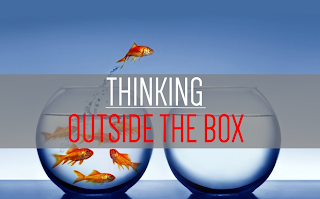
Some time ago, I wrote a post called “The High Price of Choice: Winning Battles, Losing Wars.” In that post, I spoke about making choices based on perceptual differences. This post extends the one I’ve called The Paradox of Non-Choice.
For over forty years, I’ve tried and failed to articulate an experience that transformed my life. In reflecting upon that time, I think of it as an experience in a chrysalis, moving from a view of myself as a miserable worm and being transformed into a beautiful butterfly. My self-image stunk, and I didn’t know much about an ego. The reason for my failure concerns words, which, by definition, are reflections of matters that can only be expressed about something else. The other thorny dilemma that has contributed to my failure is some things can never be adequately explained, and this was one of those.
But this morning, I awoke with a pictorial vision that gives me a way of articulating that indescribable experience. However, I can describe the picture you can imagine in your mind. If you can assimilate the essence of the picture, there’ll be a reasonably good chance of grasping that experience beyond words I’ve struggled to describe for these many years. And this, in turn, can give you the hope of realizing the goal of peace and harmony—unity with all things.
Picture in your mind a three-dimensional ball with an empty core. To help you see that, imagine “Wilson,” the soccer ball that became the sole partner of Tom Hanks in his movie Cast Away. For those who didn’t see the film, Hanks was a FedEx employee stranded on an uninhabited island after his plane crashed in the South Pacific. Everything was lost except a soccer ball made by The Wilson Sporting Goods Company. To keep from going insane, Hanks developed a relationship with Wilson, keeping him from losing all hope.
Like Hanks, anyone can perceive the outside of a soccer ball, but no one can perceive the inside simultaneously (except through imagination, and imagination became the friend of Hanks). Perceiving anything (and understanding what is perceived) requires certain conditions, one of which is contrast. For example, the ball can’t be seen if everything is white and the ball’s surface is white. The outside of that ball is called correctly conditional—one thing contrasted with (or conditioned upon) another different thing. That being the case, we could label the outside “relative” or “conditional.”
Now, we come to the inside of the ball, which is empty. It’s invisible for two reasons: first, because the outside surface hides it, and second, because it’s empty, meaning nothing is there (except air, which can’t be seen). We could adequately label the inside unconditionally since emptiness, by definition, is a vacuum lacking limitations (except when seemingly confined, as in the case of the outer surface of a soccer ball). If we were to remove the outer surface, what was inside (nothing) would be the same as if there were no surfaces. It wouldn’t go anywhere since it was nowhere—yet everywhere—to begin with.
Now, we can describe the ball entirely: The outer surface is relatively conditional and perceptible, while the inside is unconditional and imperceptible. Thus, the ball is constructed within three dimensions—the outside has two sizes, and the inside has another. And (importantly) the outside is opposite from the inside (and in that sense also relative). Neither the outside of a ball nor the inside could exist without the other. But when the inside core is isolated, it is wholly unconditional. However, it can only be that way when confined within the outside conditional surface of the ball.
Now take the next step and relabel the ball as a living organism (one of which is a human), and this living organism is constituted in the same way as the ball with only one addition—consciousness. Consciousness is a two-way street: an unconditional source functions through perceptual mechanisms that are outwardly oriented to perceive relative conditional things. The one dimension that consciousness can’t perceive is consciousness itself since it is an unconditional, non-relative non-thing (no-thing/empty). Furthermore, anything unconditional is everywhere at once—outside and inside and completely lacking detection.
Since the function of consciousness is perception, it remains the source, wholly complete and undetectable (empty). As such, we need to be made aware of its presence. We know only things that are detectable and constituted of differing natures. And unfortunately, we differentiate (or discriminate) these things into judgments of good/bad, right/wrong, black/white, up/down, and on and on.
The problem here is that we conclude that everything is either this or that and go unaware that, at the core, everything is united into an unconditional, indefinable non-entity. Enlightenment is the pure sense of self-awakening (the experience of) penetrating through the outer surface of differentiated things and into the core, where we experience/realize that everything is constituted as nothing (meaning emptiness). We then “know” our true, fundamental nature, and at the exact moment as this dawning, we realize we are neither good nor bad, white or black, or any other this vs. that. With this dawning, we understand that everyone is the same at that fundamental level—all united and unconditionally the same. And that is the source of all hope and compassion—that we are One.
So the next time you’re tempted to judge yourself or another, remember Wilson the soccer ball and know that your true self is just as empty—and thus the same as everything else.



